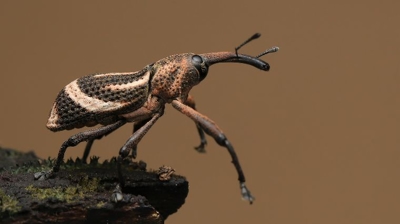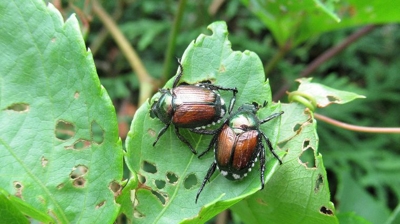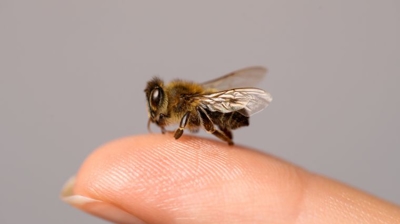
Termites
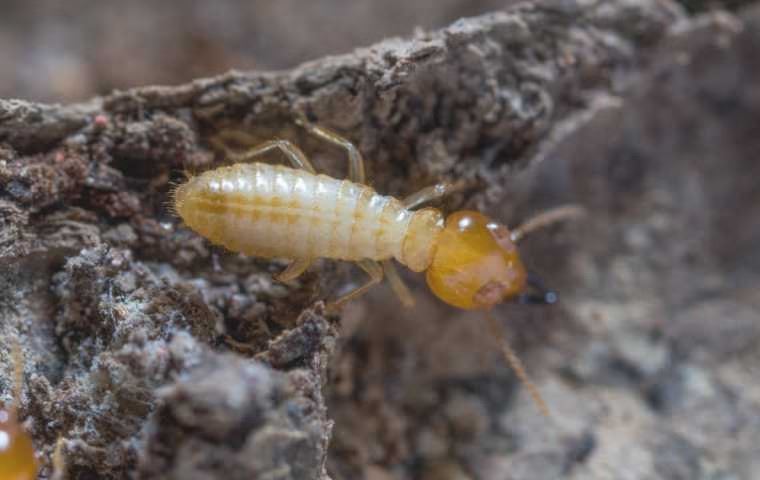
Termites are small, soft-bodied insects that belong to the order Blattodea, making them close relatives of cockroaches. Despite their size, termites are among the most destructive structural pests in the world due to their ability to consume and digest cellulose, the main component of wood. Termites are commonly referred to as "silent destroyers" because they can secretly cause significant damage to buildings, wooden structures, and furniture without any immediate visible signs.
Learn more: What Are Termites?
Are Termites Harmful?
Termites are considered harmful for various reasons, primarily due to their destructive behavior. Here are several ways in which termites are harmful:
- Structural Damage: Termites are well-known for their ability to consume and damage wooden structures, including homes, buildings, furniture, and wooden fixtures. They can weaken the structural integrity of these items, leading to costly repairs or even structural failure in severe cases.
- Economic Impact: Termite infestations can have a significant economic impact. The costs associated with termite damage and repair can be substantial for homeowners, businesses, and the construction industry.
- Fire Hazard: As termites chew through wooden structures, they create tunnels and voids. In the case of electrical wiring or other systems within walls, this can increase the risk of electrical faults and fire hazards.
- Reduced Property Value: A history of termite infestation can lower the value of a property. Prospective buyers may be hesitant to invest in a property with a known or previous termite problem.
- Health Concerns: While termites are generally not direct health hazards to humans, their presence and activities can create an environment that promotes mold growth. Mold can lead to health issues, especially for individuals with respiratory conditions or allergies.
- Property Aesthetics: Termite damage can significantly affect the appearance of wooden structures, which can reduce the overall aesthetics of a property.
Due to their secretive nature and ability to work quietly over extended periods, termites can cause extensive damage before their presence is even noticed. For these reasons, it is crucial to take proactive steps to prevent and control termite infestations, such as regular inspections and professional pest management, to mitigate the harmful effects of these pests.
Types of Termites
- Subterranean Termites: Subterranean termites are one of the most destructive termite species. They live underground in large colonies and build mud tubes to access wood above ground.
- Drywood Termites: Drywood termites, as the name suggests, infest and feed on dry wood. They do not require contact with the soil, making them distinct from subterranean termites. Drywood termites create colonies within the wood they infest and produce tiny, pellet-like fecal matter known as "frass."
- Dampwood Termites: Dampwood termites thrive in damp and decaying wood. They are typically larger in size compared to other termite species. These termites are more commonly found in forested areas and are less likely to infest homes and structures.
- Formosan Termites: Formosan termites are a particularly aggressive and destructive species. They are often referred to as "super termites" due to their large colonies and voracious appetite for wood.
Each type of termite has its unique characteristics and behaviors, which can impact the extent of damage they cause and the methods used to control or eradicate them. Understanding these differences is essential for effective termite management and prevention.
Termite Appearance
Termites are small insects that can vary in appearance depending on their role within the termite colony. However, in general, they have certain distinctive features. Termites typically measure between 1/4 and 1/2 inch in length, and their bodies are soft and pale, usually ranging from white to light brown. Here are the different castes and their appearance:
- Worker Termites: Workers make up the majority of the termite colony and are responsible for tasks such as foraging for food, feeding other castes, and constructing tunnels. They have soft, creamy white bodies, straight antennae, and are blind. Their primary function is to maintain and repair the nest.
- Soldier Termites: Soldiers have similar body characteristics to workers but are equipped with larger, often darker heads and mandibles (jaws) that they use for defense. These mandibles help them protect the colony from predators, primarily ants.
- Swarmers (Alates): These are the reproductive termites, and they are the most distinctive in appearance. Alates have a dark-colored, well-defined body, which is typically black or dark brown. They have four wings that are of equal size and shape, and they are usually twice the length of the termite's body. Swarmer termites have straight antennae, and their wings are shed once they establish a new colony.
- King and Queen Termites: The king and queen are the largest termites in the colony. The queen's body can grow to be several inches long as she is an egg-laying machine. She has a swollen, elongated abdomen. The king is slightly smaller and accompanies the queen in the chamber.
Termites are generally small, pale, and soft-bodied insects. Worker and soldier termites are similar in appearance, with the main distinction being the larger, more robust mandibles of the soldiers. Swarmers have dark bodies with long wings, while the king and queen are the largest members of the colony and have distinctive roles related to reproduction. Understanding these physical characteristics can help in identifying termites, which are destructive pests known for causing damage to wooden structures.
Learn more: What Do Termites Look Like?
Learn more: Do Termites Have Wings?
Learn more: What Do Termite Droppings Look Like?
Learn more: Termites vs Ants
Termite Habitats
Termites can be found in various locations, primarily in areas where they can access a source of cellulose, which is their main food. They are more common in certain geographic regions and can be found in different environments. Here's where you might find termites:
- Geographic Distribution: Termites are more prevalent in warmer, humid climates, such as the southern United States, Southeast Asia, Africa, and South America. However, they can be found in almost every part of the world, with different species adapted to various environments.
- In and Around Homes: Termites often infest homes and buildings. Termites feed on wood, so they are commonly found in wooden beams, joists, and furniture. They can enter homes through the foundation and infest structural wood components. Termites may establish colonies in attics and crawl spaces. Termites are attracted to moisture, so they can be found near leaky pipes, drains, or damp areas.
- Gardens and Landscapes: Termites can infest dead or decaying wood, including tree stumps, mulch, and fallen branches in your yard.
- Tree Nests: Some termite species build nests on trees, especially in tropical and subtropical regions. These nests are often referred to as epigeal nests.
- Subterranean Nests: Many termite species, including subterranean termites, build nests underground. They construct mud tunnels or tubes that extend from the ground to their food source, which can be hidden from view.
- Wooden Fences and Decks: Termites can infest wooden fences, decks, and other outdoor wooden structures.
- Wooden Furniture: Termites can damage wooden furniture, especially if it has been exposed to moisture or is in a damp environment.
- Firewood: Stacked firewood near your home can attract termites, providing a bridge for them to enter your structure.
- Old Trees and Dead Wood: In forests and natural areas, termites play a crucial role in breaking down dead and decaying wood. You may find them in such environments, contributing to ecological processes.
To identify a termite infestation, look for signs such as mud tubes, damaged wood, swarming termites, and discarded wings. If you suspect you have a termite problem, it's essential to contact a professional termite control expert for a termite inspection and appropriate treatment, as termites can cause significant damage to structures.
Learn more: What Causes Termites?
Learn more: Where Do Termites Come From?
Learn more: Does Mulch Attract Termites?
Learn more: Flying Termites In Your House?
Learn more: How To Get Rid Of Flying Termites
Termite Diet
Termites are primarily herbivorous insects that feed on cellulose, which is a complex organic compound found in plant materials. Cellulose serves as their primary source of nutrition. Termites can feed on a wide variety of materials containing cellulose. Here's what termites eat:
- Wood: Termites are well-known for their ability to digest and break down wood. They can consume both hardwood and softwood. This makes wooden structures, such as buildings, furniture, and trees, a common target for termite infestations.
- Plant Material: In addition to wood, termites feed on various plant materials, including leaves, grass, and plant litter. Some termite species are specialized in foraging for specific types of plant material.
- Paper: Termites can also damage paper products. Books, cardboard, and other paper-based items may be consumed if they are in contact with a termite colony.
- Mulch and Compost: Termites are attracted to mulch and compost piles, which are rich in decaying plant matter. They can feed on these materials if they are in close proximity to a colony.
- Cellulose-Based Materials: Termites are not limited to natural sources of cellulose. They can also feed on cellulose-based materials, such as particleboard, plywood, and fiberboard. These materials are commonly used in construction and can be susceptible to termite damage.
- Dead and Decaying Wood: Termites play an essential role in ecosystems by breaking down dead and decaying wood. They help recycle organic matter in forests and natural environments.
- Grass and Crops: Some termite species, such as grass-feeding termites, target grass and agricultural crops. While they are not as destructive as wood-feeding termites, they can still pose a threat to agriculture.
Termites require a moist environment to thrive, and they often establish their colonies near a water source. They build tunnels or mud tubes to access their food sources safely. Termites are generally subterranean, meaning they live underground, which provides them with protection from predators and environmental conditions.
Termites can cause significant damage to wooden structures, and early detection and professional pest control are essential for preventing structural issues and property damage.
Learn more: What Do Termites Eat?
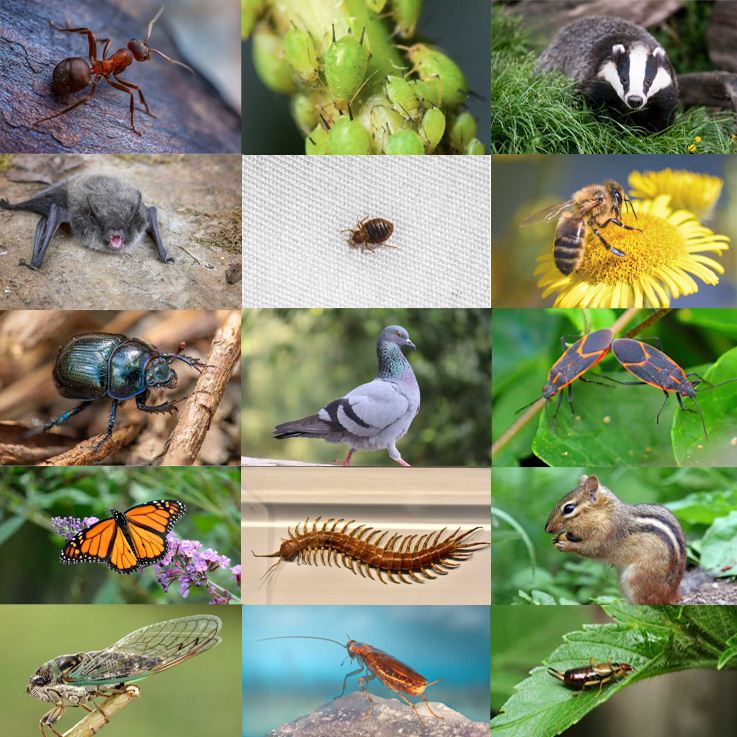
Termite Life Cycle
The life cycle of termites involves several distinct castes within a colony and includes stages such as egg, nymph, and adult. The life cycle of termites is characterized by a process known as metamorphosis, which includes several molts and castes. Here's the life cycle of termites:
- Egg Stage: The termite life cycle begins with the egg. The queen termite, which is the colony's reproductive female, lays eggs in a secure chamber within the nest. The eggs are cared for by worker termites and hatch into nymphs.
- Nymph Stage: After hatching, the young termites are referred to as nymphs. Nymphs resemble smaller versions of adult termites but are not yet fully developed. They go through a series of molts, shedding their exoskeletons as they grow. Nymphs are responsible for various tasks within the colony, including caring for eggs and young, foraging for food, and maintaining the nest.
- Caste Differentiation: As nymphs continue to develop, they may eventually become specialized into different castes, depending on the needs of the colony. The primary castes in a termite colony include workers, soldiers, and reproductives (swarmers). Workers are the most numerous termites in the colony and are responsible for tasks like foraging, feeding, and nest maintenance. Soldiers are specialized for defense, and they have larger heads and mandibles to protect the colony from threats. Some nymphs develop into alates, or swarmers, which are the winged reproductive termites. These termites leave the colony during a swarm to start new colonies. Once they find a suitable mate, they shed their wings and become the king and queen of a new colony.
- Queen and King: Once a pair of alates has mated, they become the primary reproductives of a new colony. The queen's sole purpose is to lay eggs, and she can produce thousands of eggs each day. The king's role is to fertilize the queen and assist in colony maintenance.
- Colony Expansion: Over time, the colony continues to grow as the queen lays more eggs, and the workers and soldiers maintain the nest, forage for food, and defend against threats. The colony may produce additional swarmers to create new colonies.
The termite life cycle is highly organized, with each caste performing specific roles to ensure the survival and growth of the colony. Understanding this life cycle is crucial for effective pest control and management, as it allows professionals to target the specific castes responsible for the colony's survival. Termites can be highly destructive pests, causing damage to wooden structures, making it essential to address infestations promptly.

Hear From Our Happy Customers
-
"Great Communication"
Tech was on time, communication was great, and he accommodated my needs.
- Alonzo W. -
"Fantastic & Patient"
Jarvis was fantastic and patient. He answered my questions with an in-depth explanation and addressed all of my areas of concern. Would love for him to be my assigned tech going forward. Well done!
- Yonnette M. -
"Exceeds Expectations"
I can’t say enough positive things about this company... The tech that came out, Jarvis went above and beyond my expectations. Thank you guys, I will continue using your services.
- Jake M. -
"Professional & Considerate"
I’m pleased with Miche services. Jarvis came today. Professional and considerate. Thank you!
- Judy B. -
"Wonderful Service"
Wonderful service. Jarvis is great. Took care of everything I needed. Thank you!
- Henry P. -
"Very Knowledgeable"
The tech that arrived was courteous, professional, and very knowledgeable. He was Great.
- Uerial I.

